15 Best Types of Christmas Trees to Bring Home and Decorate for the Holiday Season
Don't be afraid to branch out from your usual Christmas tree style


Picking a Christmas tree might seem straightforward, but the wide variety of options to choose from makes the process surprisingly challenging. From white spruce to Fraser fir, even the best tree type for Christmas comes with a handful of pros and cons worth considering before deciding to hang your ornaments on it.
This list will help you better understand what to ask for on your trip to the Christmas tree farm, whether you’re looking for something tall and full, short and slender, or fragrant enough to make your entire home smell like a forest.
Fir Trees for Christmas

Firs are one of the most popular types of Christmas trees. You can identify fir trees by their unique grouping of needles, which grow directly from the branch and are shaped like suction cups at the base. That extra support makes their leaves the perfect vessel for hanging both light and heavy ornaments.
These are a few of the most common types of fir trees you’ll often see as Christmas trees.
1. Balsam Fir

Balsam firs are a great all-around Christmas tree for people who love that strong, spicy, evergreen scent. The needles are round, soft, and dark green—exactly what comes to mind when you think of a classic Christmas tree.
This tree also isn’t a big shedder. While you’ll still need to pull out the vacuum more than you would with an artificial Christmas tree, balsam firs generally have stellar needle retention compared to other types.
2. Fraser Fir
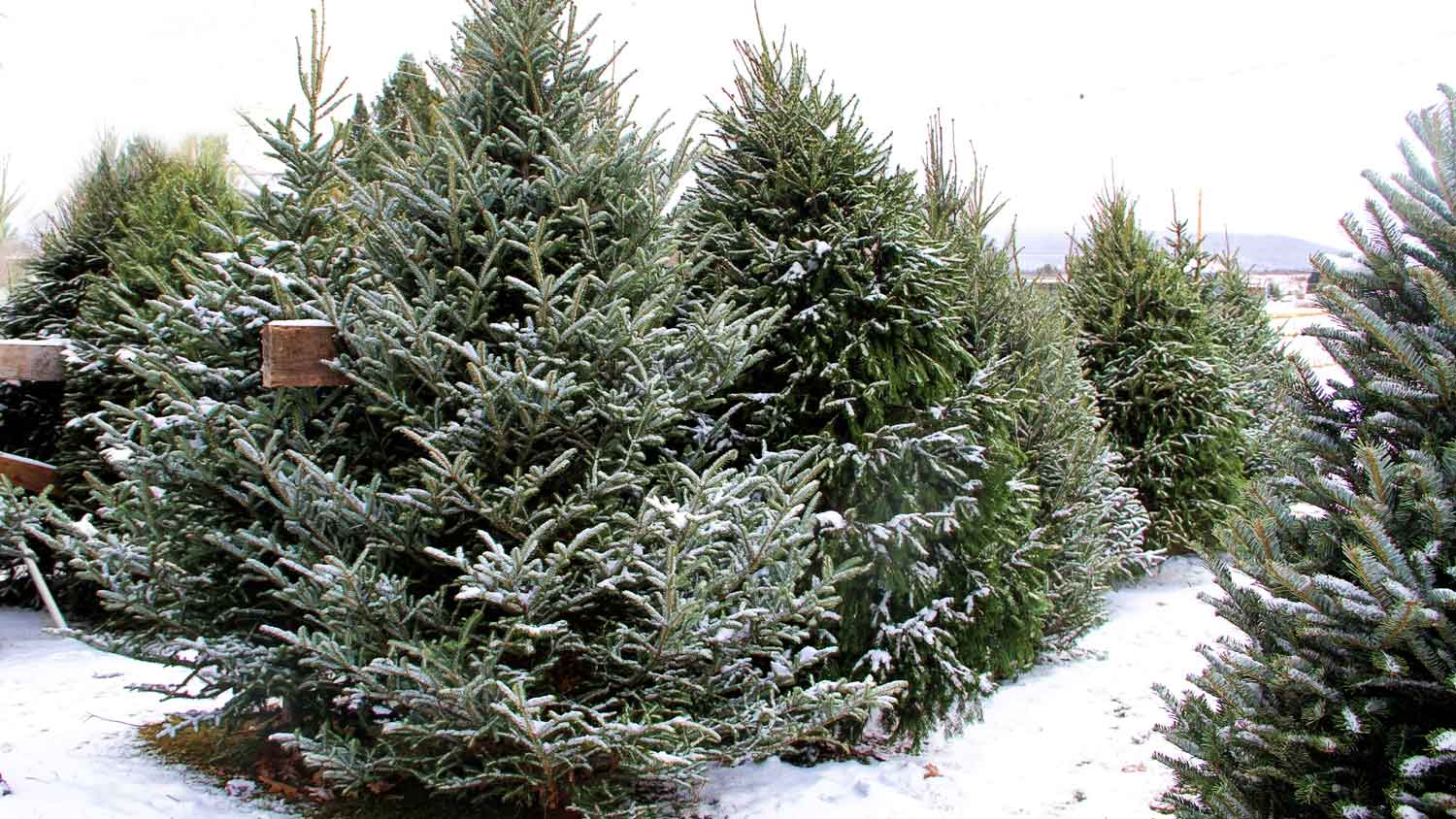
Out of all the real Christmas tree types, Fraser firs are often considered the ideal for holiday decorating—especially if you believe more is more. They’re even a favorite in the White House. So what’s the appeal?
These trees have a classic evergreen scent that will stick around the whole season, but their strong branches are the main draw. They’re set slightly apart, allowing your heaviest ornaments to take center stage. They’re also great for families with kids: The soft, silvery-green needles won’t poke small hands trying to help.
3. Douglas Fir

According to the National Christmas Tree Association, Douglas firs have been one of the top Christmas tree species in America since the 1920s. Back then, they mostly came from natural forests rather than farms, but today, you can even get one from a big box hardware store during the holidays.
Douglas firs have the ideal pyramid shape and are renowned for their fullness. The needles are soft and sweet-smelling, protruding from the branch in all directions—but a little finicky. If this tree doesn’t get enough water, it will start dropping needles fast.
4. Canaan Fir
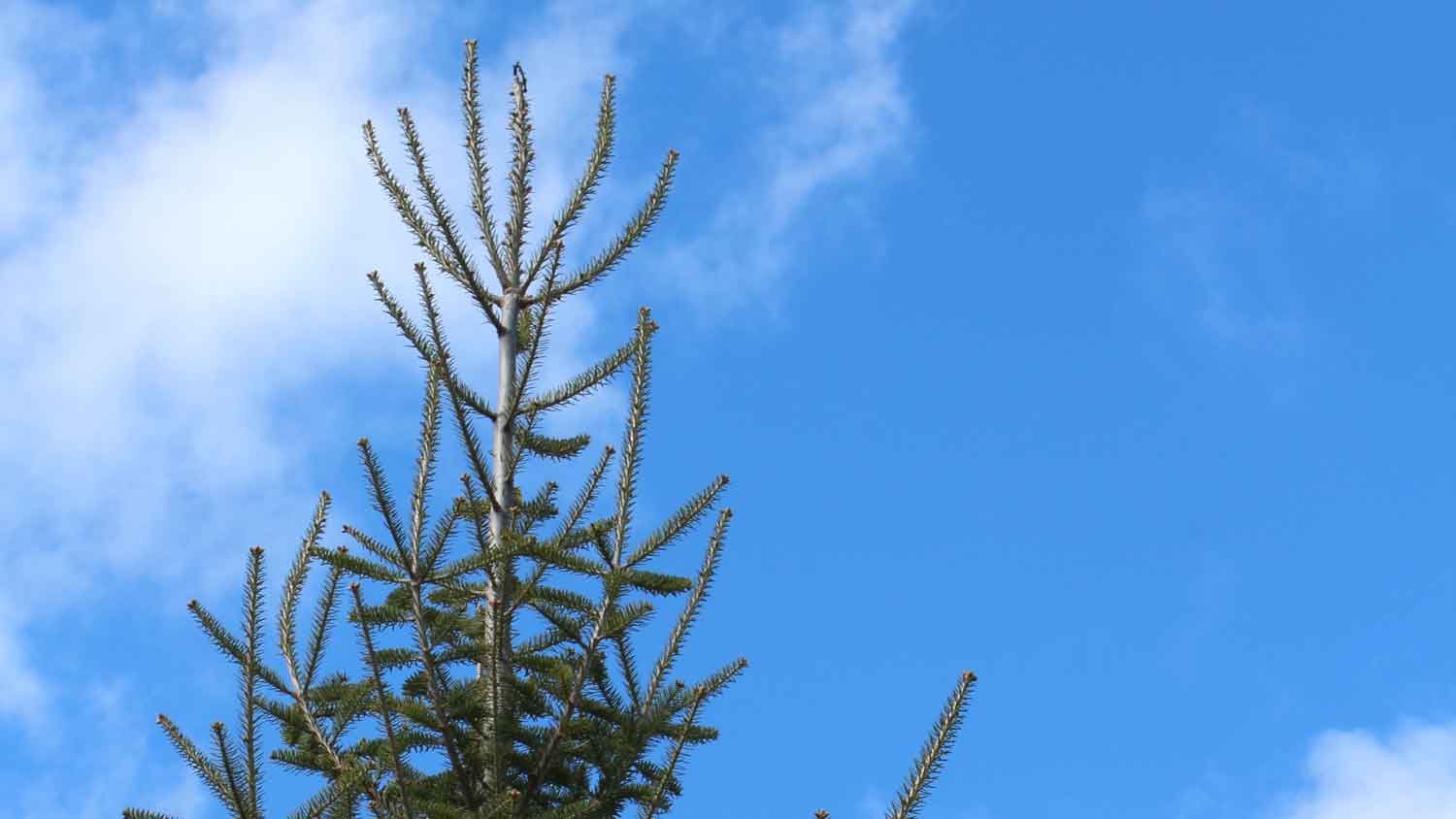
Can’t choose between a Fraser and balsam fir? Get a Canaan fir. This up-and-coming Christmas tree type is slowly gaining popularity because it has strong branches that are ideal for decorating (like a Fraser fir) with bold, rounded, green needles (just like a balsam fir). The scent is on the milder side, but it does have relatively good needle retention, so there’s less cleanup.
5. Grand Fir
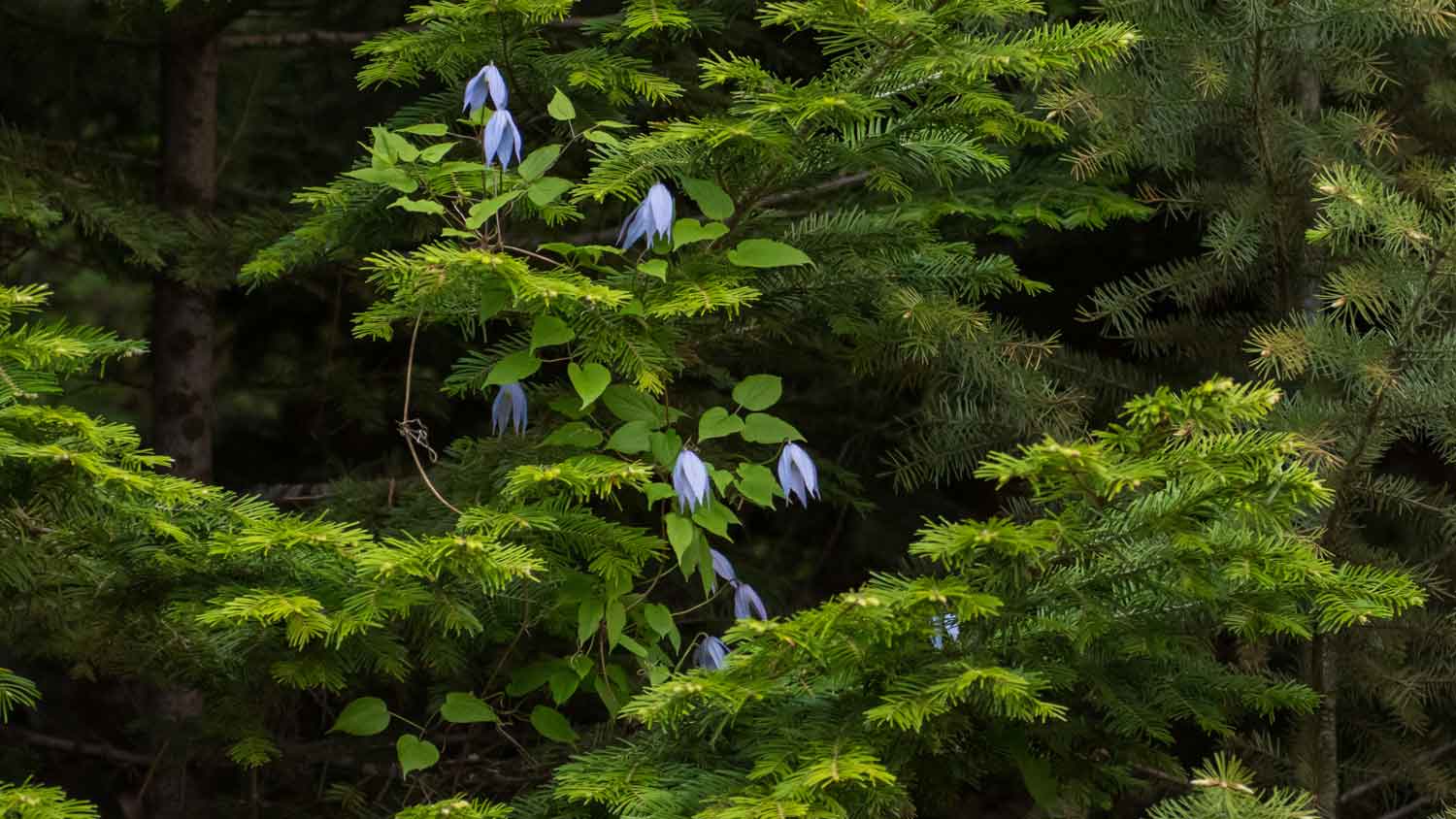
Grand firs are, in no uncertain terms, grand. According to the National Christmas Tree Association, this species can reach 300 feet in height—making it one of the tallest firs at the Christmas tree farm.
While the largest versions of these trees are undoubtedly impractical for a home’s interior, this variety is also one of the most fragrant and distinct. If the holidays aren’t complete without the scent of Christmas trees wafting through your living room, the grand fir is it.
6. Noble Fir

Looking for a large, strong, silvery-blue variety? Try a noble fir tree. Like grand firs, noble firs are tall. They can reach up to 260 feet in the wild—so they’re totally at home inside the foyer of a large office building. Though this is a popular variety for wreaths, the stiff branches lend themselves to heavy ornaments. Never fear a branch snapping and a priceless heirloom bauble crashing to the ground.
7. Concolor Fir
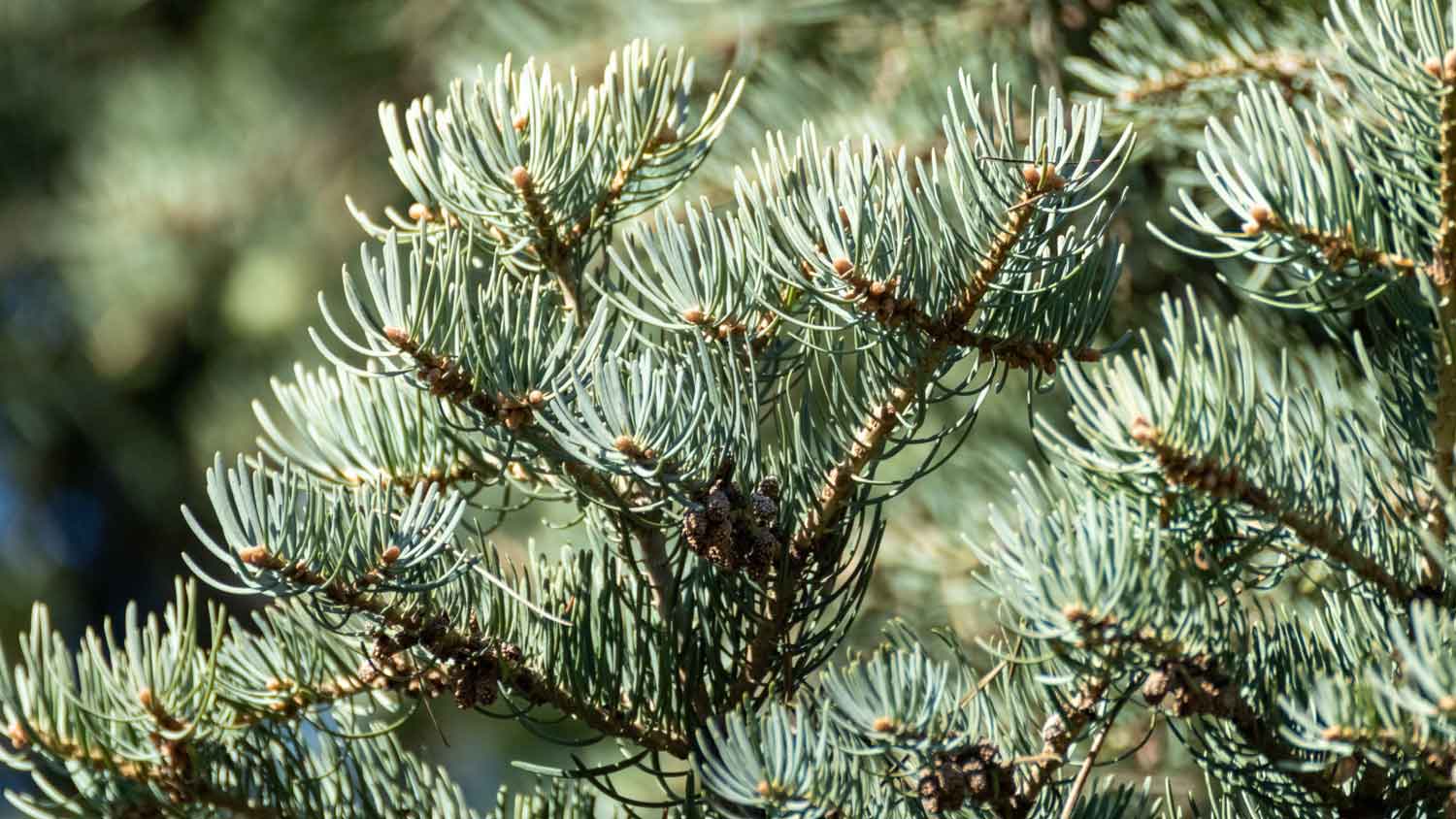
Concolor firs (also called white firs) are known for their distinct needles and pleasant, lemony scent. The needles have a frosty, sometimes blue-green tinge. It’s a far cry from the standard rich green of a traditional Christmas tree.
Beyond the unique color, this tree is excellent for homeowners who regularly travel. No water this week? No problem. While you shouldn’t make it a habit, this hearty species is a little more low-maintenance than its fellow fir cousins. However, just remember that dried-out Christmas trees can quickly become a fire hazard.
Pine Trees to Choose for Christmas
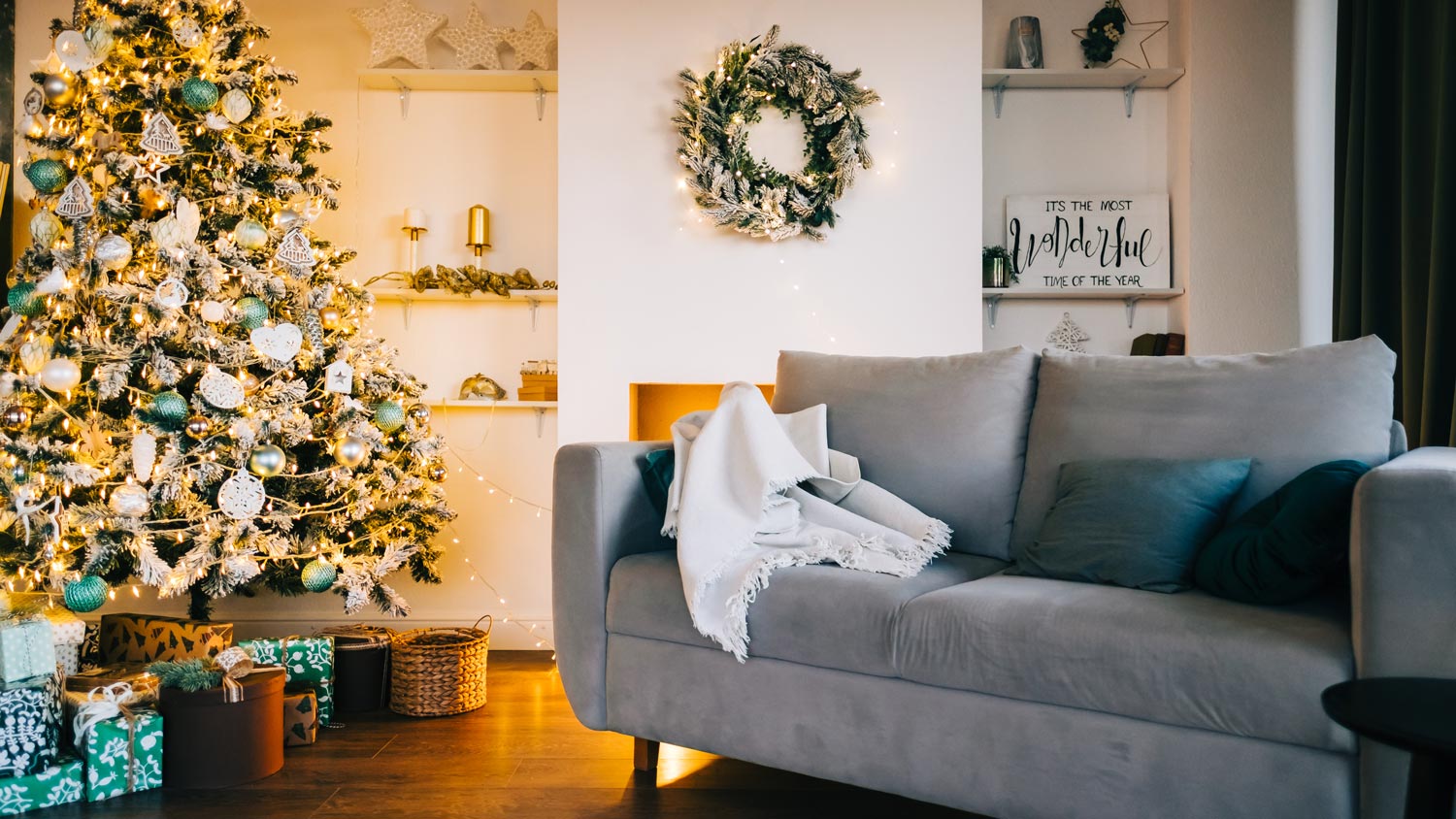
Though pine trees are perhaps most famously associated with Christmas, they aren’t the most popular variety. These are three of the most common types of pines you’ll see around this time of year.
8. White Pine
The needles on this tree grow in bundles rather than individually. While beautiful, this aspect means that these trees can’t typically support heavy ornaments or decorations. And you’ll quickly discover that this type of pine gives off little to no aroma, too.
9. Scotch Pine
Scotch pines tend to be the most popular option of the two because their needles are stronger in more ways than one. They’re sturdy enough to provide support to even your heaviest ornaments, and this strength also means they don’t fall off easily. Picking this option can be an easy way to minimize pine needle cleaning sessions this holiday season.
10. Virginia Pine
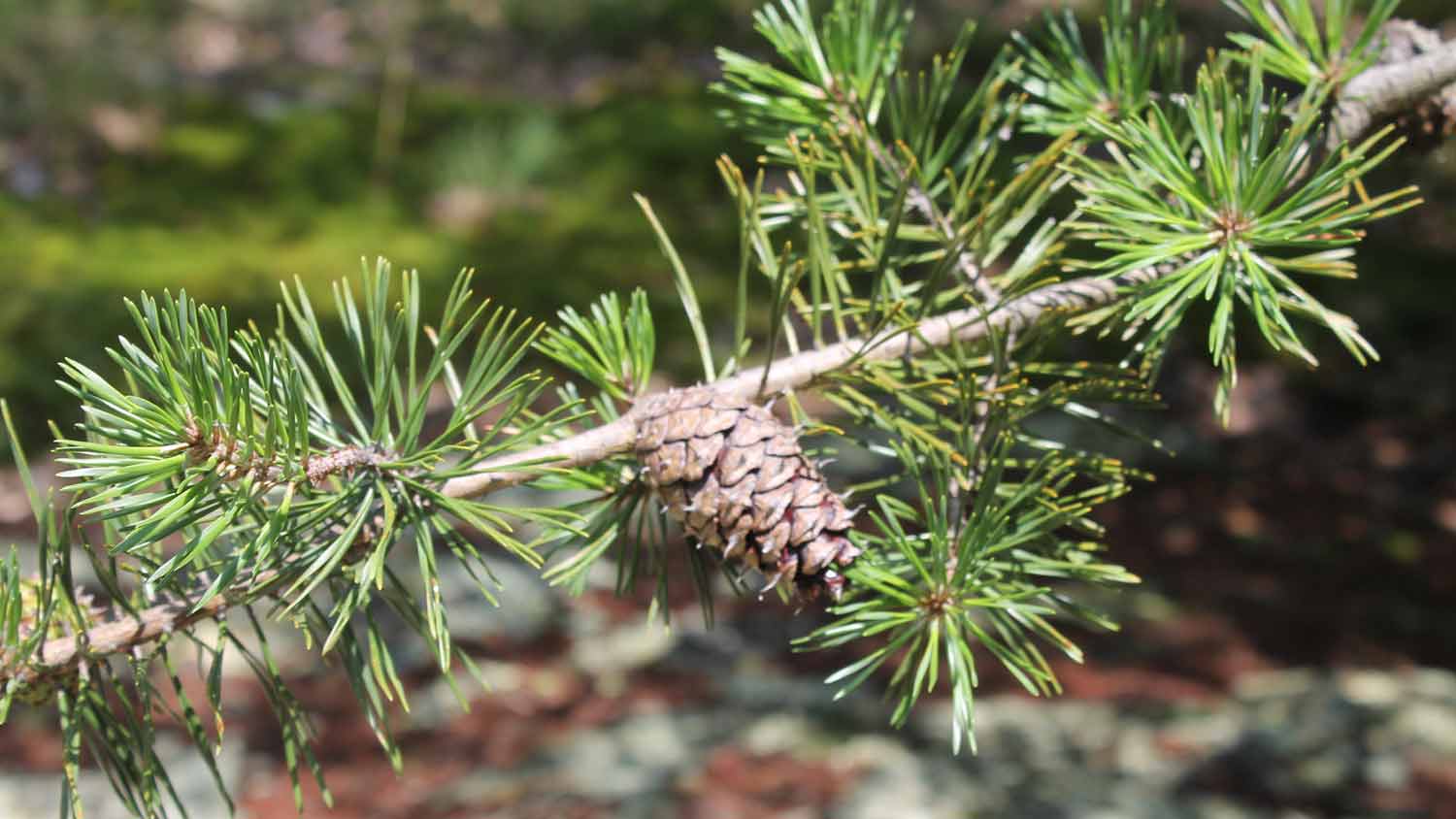
Don’t settle for Charlie Brown’s Christmas tree. Virginia pines are one of the best Christmas trees for decorating small living rooms and apartments. Though their height and branches are shorter than most, they’ve got a twisted look that reads as ultra-bushy. Add in the classic, rich green, and we’re sold.
Spruce Christmas Trees

Unlike firs and pines, which are typically large and densely packed, spruce trees are defined by their whorled branches and scaly bark. Though many spruce options may seem sparse, that’s just a part of their unique appearance.
11. Norway Spruce
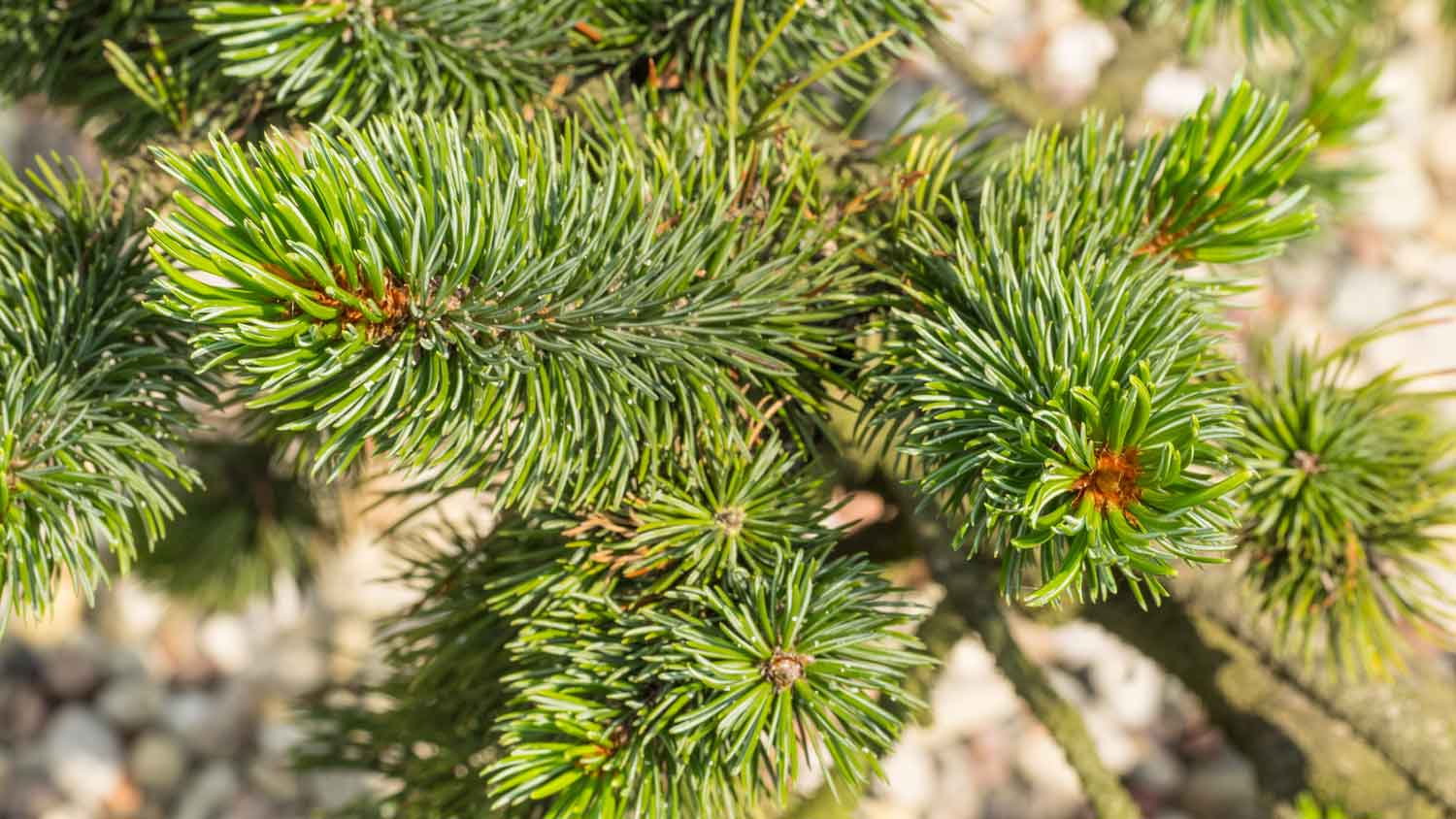
Though beautiful, this variety of spruce doesn’t last long after harvesting. Without consistent watering, the needles of this tree will begin to fall and dry after just a week or two. If you choose this tree, make sure it’s well into December to ensure a beautiful tree on Christmas morning.
12. Blue Spruce
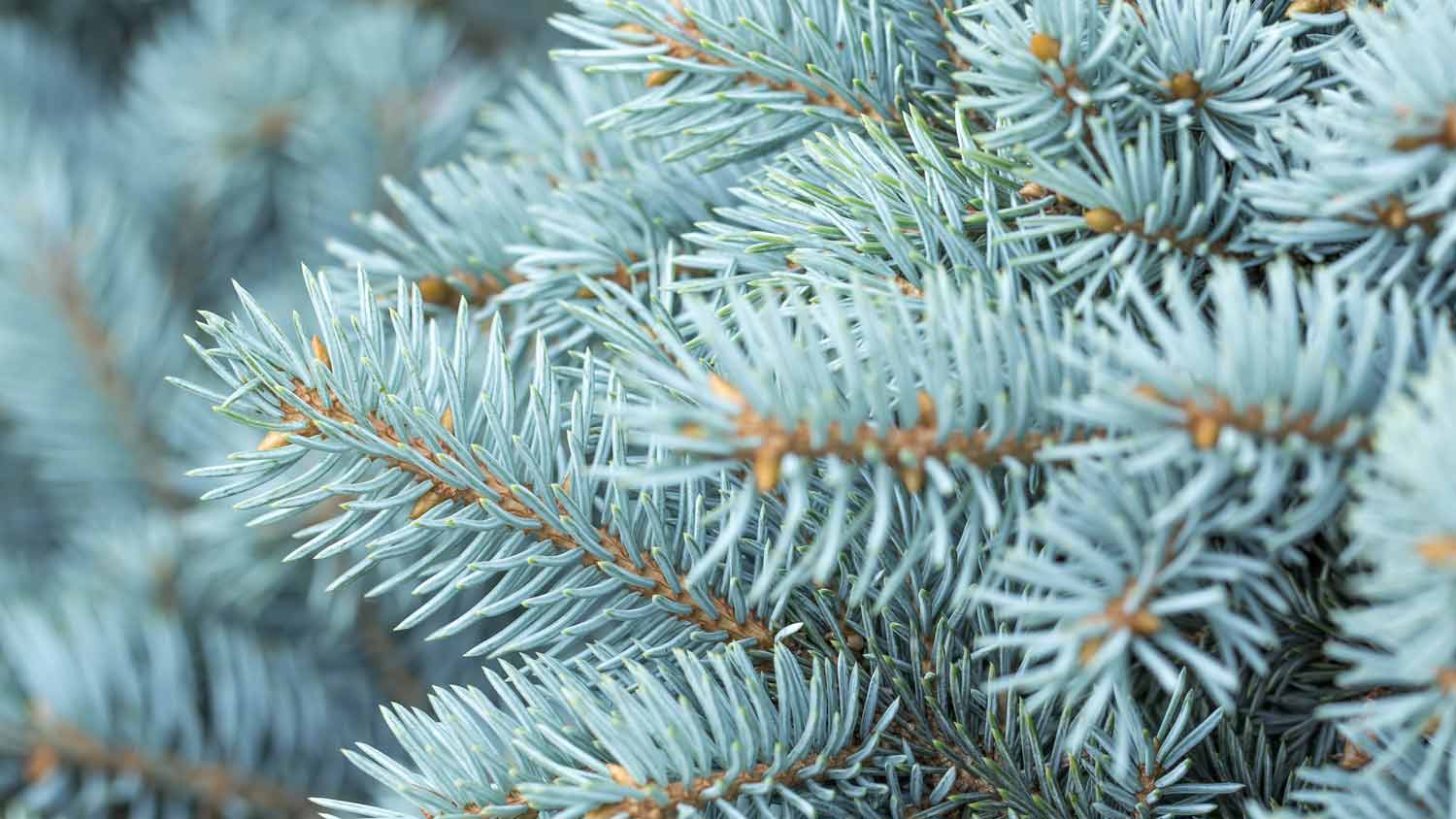
This genus, sometimes known as Colorado blue spruce, is famous for its unmistakable shades of blue and silver, as well as its strong, sturdy branches that are great for holding ornaments. It’s also reliably symmetrical (perfect for photoshoots) and won’t lose its needles easily.
13. White Spruce
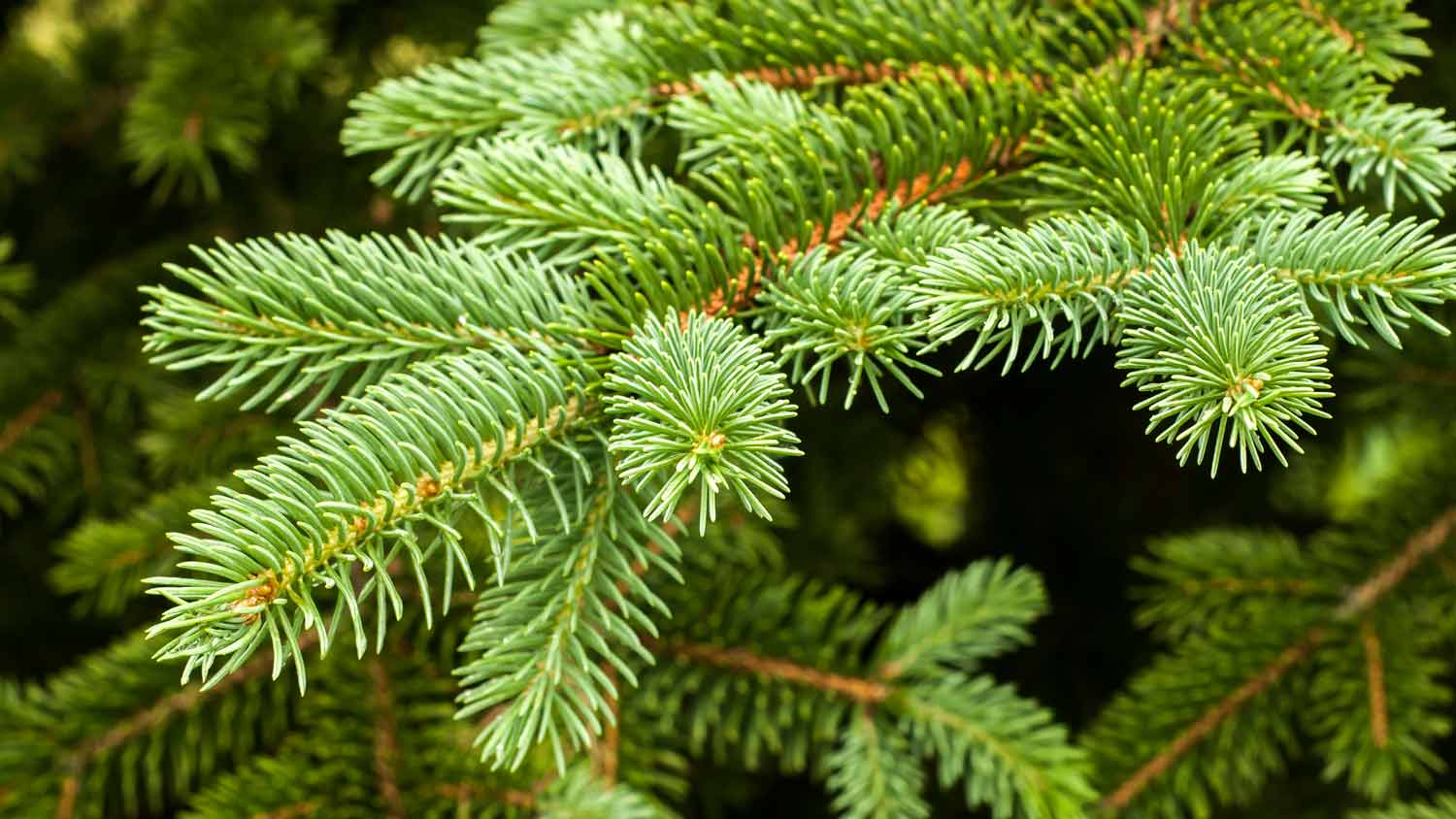
Also known as Canadian spruce, this type of Christmas tree is bluish-green in color and has short, stubby needles that don’t fall off easily. However, its branches aren’t great for hanging decorations. White Spruces also don’t tend to smell great, especially when their needles are crushed or broken.
Cypress Christmas Tree Types
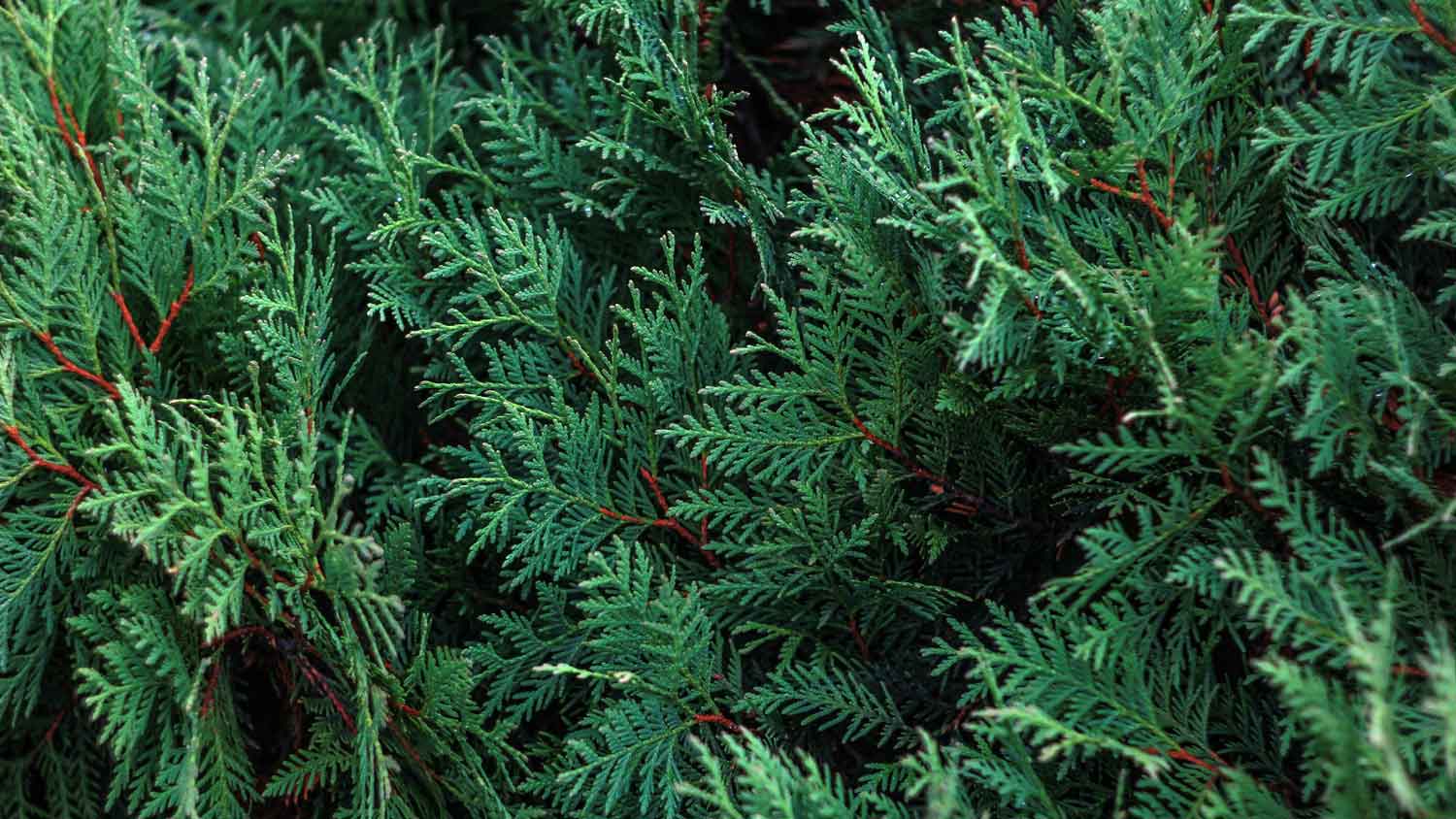
Cypress trees are popular Christmas trees for two reasons: they’re durable, and they don’t produce sap. The latter is a saving grace for folks who want to get festive but have sap allergies.
14. Leyland Cypress
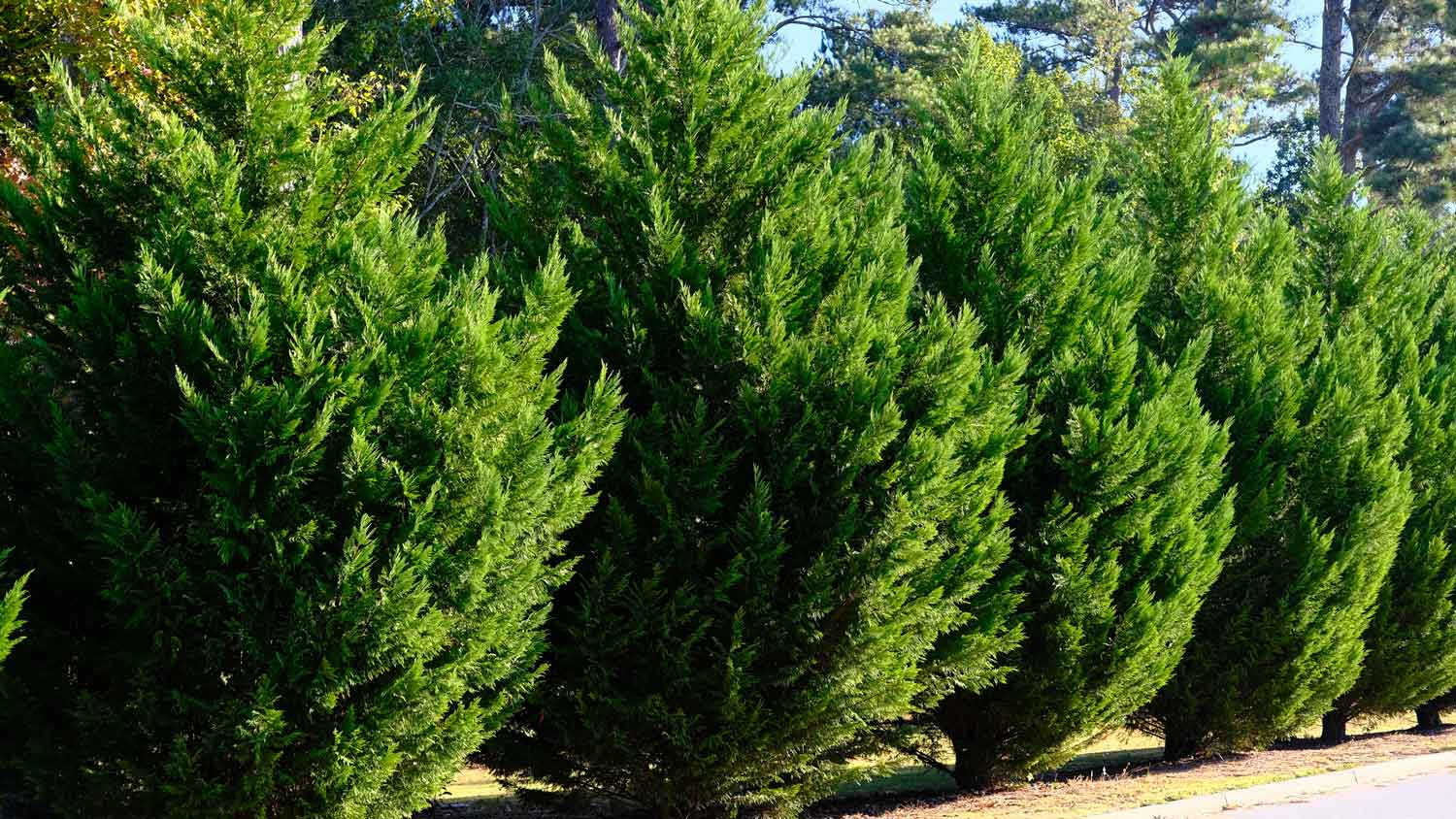
With appealing, fan-like branches, it’s no wonder that Leyland cypress is one of the most popular Christmas trees in the Southeast, according to the National Christmas Tree Association. This tree type is one of the best options for people who are sensitive to traditional Christmas trees (despite popular belief, you don’t always need to go artificial).
If you have allergies, this tree doesn’t produce pollen or sap. If the strong smell of pine or fir gives you a headache, this tree isn’t very fragrant. It’s a win-win.
15. Blue Ice Arizona Cypress
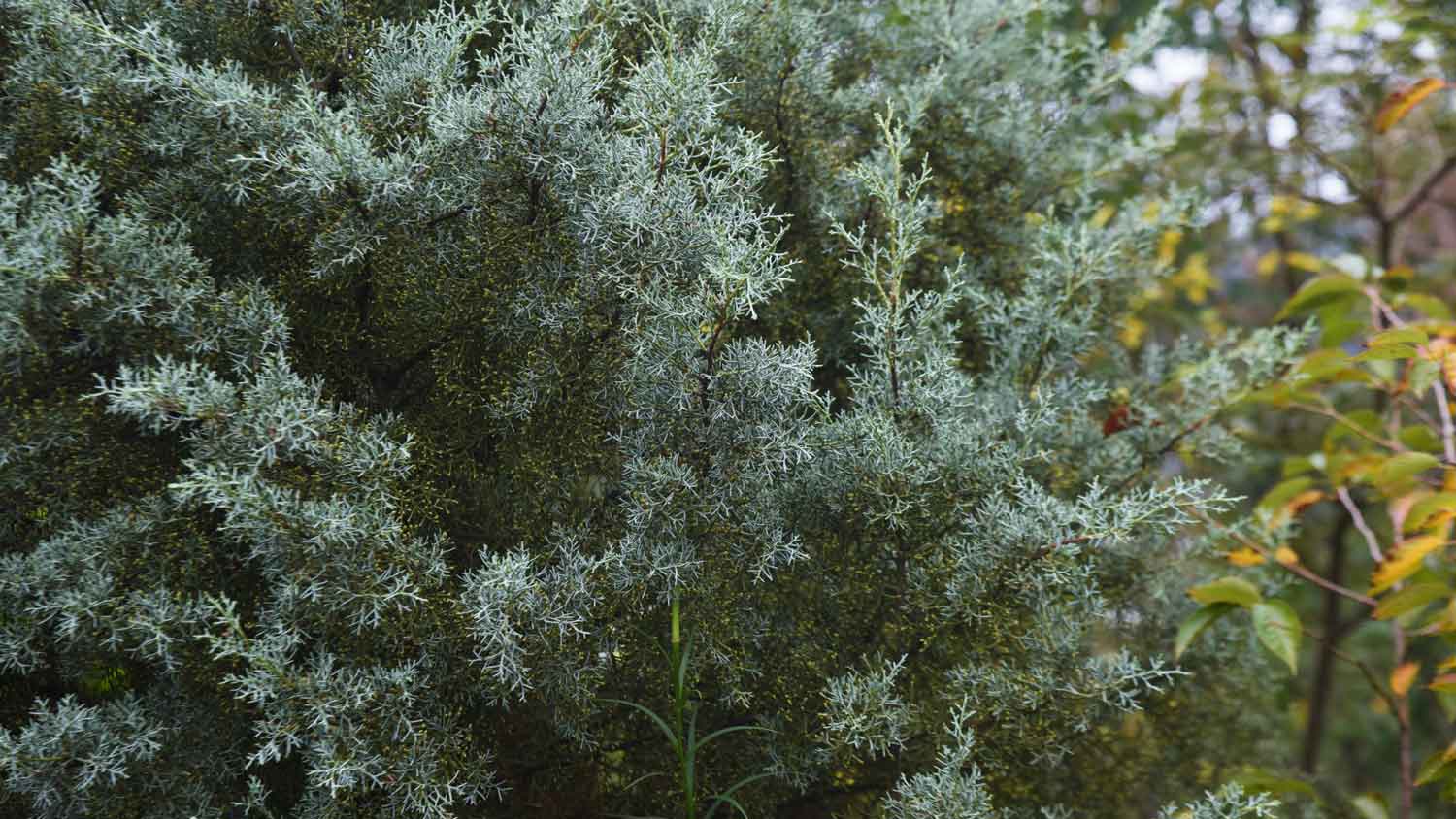
They don’t call it blue ice for nothing. The blue ice Arizona cypress has silvery-blue needles that will set your tree apart from more traditional types of Christmas trees. In fact, they almost look permanently frosted—so, yes, you can have a white Christmas even if you live somewhere that won’t get any snow.
Unlike Leyland cypress, this tree does have a subtly pleasing scent. The only problem is that it’s a rarer variety of Arizona cypress, so you may not be able to find it everywhere.
3 Tips for Choosing the Perfect Christmas Tree Type for Your Home
Even if you’ve decided that a certain type of Christmas tree is the one for you based on looks alone, there are a handful of other factors you should consider to be sure you’re making the best choice. From the size of your ornaments to the day you’re planning to get the Christmas tree, here’s what you should know.
1. Think About The Types of Decorations You’ll Be Using
If you’re a fan of heavy ornaments or garlands, you’ll need a tree that can carry those additional pounds and look good while doing it. In these instances, blue spruce and scotch pines have long, strong branches that can bear the extra weight. And if you can’t imagine Christmas without a star at the top of the tree, make sure to choose a type that will hold it in place all season long, like balsam or Fraser fir.
2. Factor in When You’re Planning to Get the Tree
The sooner you get your tree, the sooner it’s going to wilt and dry out. Some prefer to start the Christmas season as soon as Halloween is over. If this is you, opt for long-lasting tree types like Fraser firs rather than ones that will die quickly, like a Norway spruce.
Even these trees will need proper care and watering to ensure they look good when Christmas finally arrives (and to ensure you don’t have to dispose of your Christmas tree before the big day). If you’re not up to the task with all the other things on your holiday to-do list, you might be better off opting for an artificial tree.
3. Keep an Eye on Christmas Tree Prices in Your Area
Christmas tree prices can range from as little as $50 to as much as $300, depending on the type and size you choose and when you decide to buy it. Odds are, the options at your Christmas tree farm will be more expensive at the beginning of the season when demand is higher, but those prices may fall the longer you wait.
Frequently Asked Questions
The Christmas tree type that smells the best to you will ultimately depend on personal preference. But if that classic Christmas tree smell is important to you, choosing a type of tree known for its scent is a safe bet. Try a balsam fir for a spicy, comforting scent or a Douglas fir for a sweeter smell. You may also like Fraser firs, Scotch pines, and blue spruces.
Many consider the Fraser fir to be the most popular type of Christmas tree, but which type of tree sells out near you can depend on region and decorating trends that year. For example, the Leyland cypress is especially popular in the Southeast, according to the National Christmas Tree Association.
Typically, the most expensive type of Christmas tree is either the Douglas fir or the fraser fir. That being said, lots of different factors can affect what you’ll pay for a Christmas tree including supply and demand, size of the tree, and more. Your best bet is to speak with a pro at your local Christmas tree farm to find the best tree for you.





- How to Dispose of Your Christmas Tree Once the Holidays Are Over
- How to Choose Between a Real or an Artificial Christmas Tree
- How to Put Lights on a Christmas Tree Like a Pro
- 7 Quick and Easy Outdoor Christmas Decoration Ideas
- How to Tell What Type of Tree You Have in Your Yard
- How to Decorate a Small Living Room For Christmas: 12 Holly-Jolly Decorating Tips
- How to Keep Your Christmas Cactus Thriving Long After the Holidays Are Over
- Can You Cut Down a Tree on Your Property?
- Can You Put Christmas Lights on the Ground? Here’s What to Do
- Why Tree Topping Techniques Are Bad for Your Tree and Your Property















